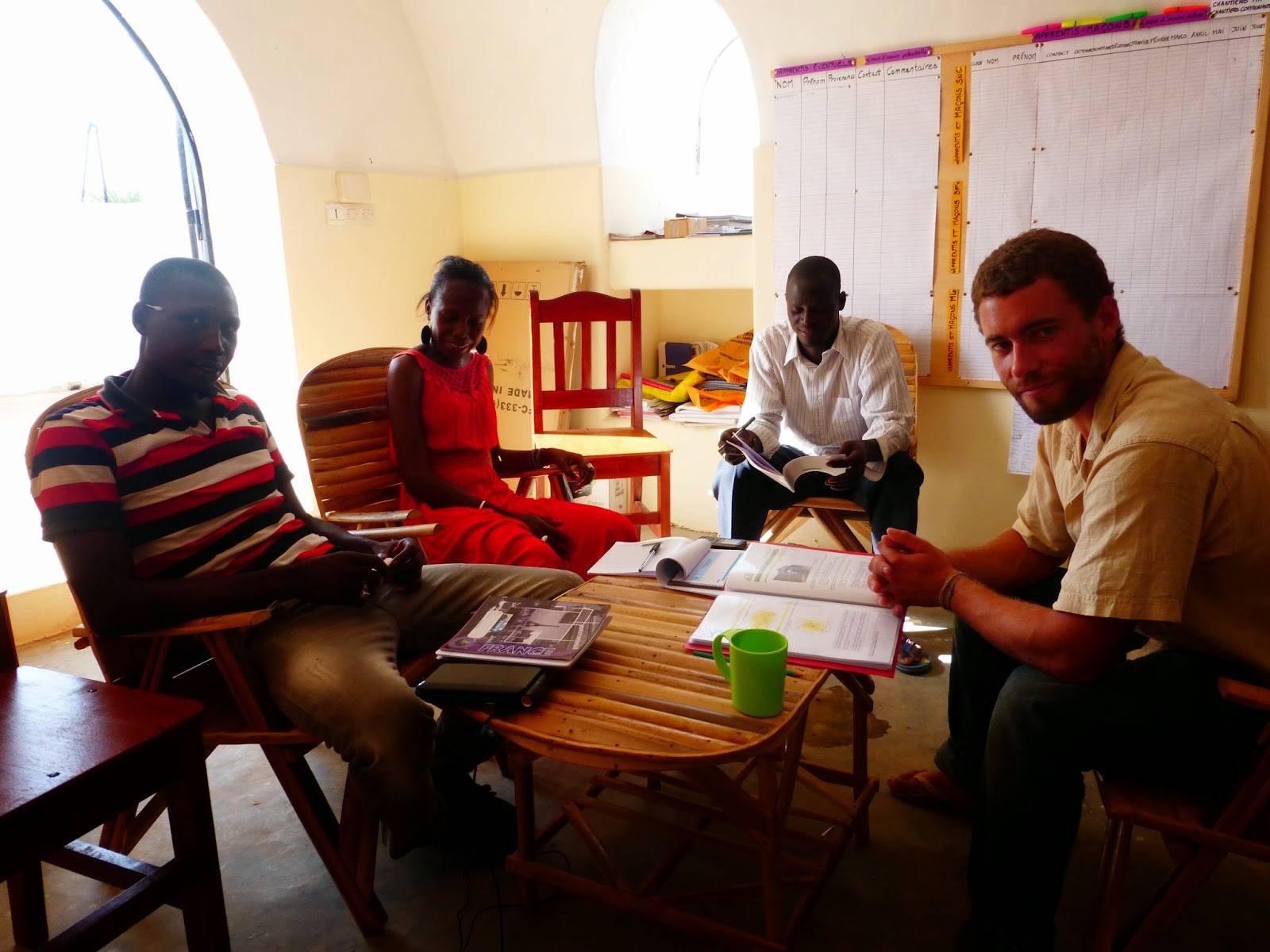Completion of Service
I'm now officially an "RPCV"--Returned Peace Corps Volunteer--despite the fact that I have not actually "returned" anywhere. In fact I'm staying in my host country for the next two years--and continuing to write this blog.
Many Peace Corps volunteers struggle with readjustment when they return. Physically, emotionally, and financially, going back to the US after two years in another country can be stressful. So I was in no hurry to move back, and instead I scored a job here--putting off the inevitable culture-shock for another two years. My new job really has a number of attractive qualities, beyond simply allowing me to avoid the inconvenience of re-assimilating into America.
The New Job
Working for the Association la Voute Nubienne (AVN) has thrown me into a leadership position in a top-tier development NGO that offers opportunities and challenges in equal measure. I've had to learn on the fly and in the field what one should probably spend months or even years studying. But at least I have a foundation to rely on; a solid education, a strong base of technical know-how, and a firm understanding of local language and culture.

My colleagues and me--the AVN Senegal team. Fanny Dupuis (French; Coordninator AVN Senegal), Ndiame Fall and Khady Ly (Senegalese; Extension Agents) and me (American; Assistant coordinator).
AVN is the lead NGO in sub-saharan Africa targeting the increasingly serious problem of housing. The reality is this: desertification, deforestation, an exploding population, and the perceived "backwardness" of mud huts render traditional wood-and-thatch roofed homes increasingly less tenable. People turn to cement, re-bar, and sheet-metal as a quick fix. These buildings have become the new standard in many regions. Yet the materials are costly--for the homebuilder and for the environment. Furthermore the product is poorly adapted to the dry, hot, windy Sahel region. The blistering heat bakes thin cement walls and metal roofs, roasting the hapless inhabitants. Raging winds rip the flimsy tin roofs completely off, and the relentless rain leaks through the ubiquitous gaps left by wind, rust, and time.
A better solution exists. Hailing from 1300 bc in Northern Egypt the Nubian Arch technique provides an elegant solution to the problem of building stable roofs entirely out of earth bricks. Due to the perfect arched shape of the vaulted ceiling the immense weight of bricks above only strengthens the structure, and can even support a second story. The co-founders of AVN, two masons from France and Burkina Faso, have revived the Nubian Arch technique with a simplified, codified system that is easy to teach and quick to apply.
A picture of the inside of a Nubian Arch home near where I live. Here only the crude structural work is done, the finishing stages are not yet completed
Here is a finished Nubian Arch house--and also the office where I work.* The second story is my room.
My work spans a wide range of duties, from designing and testing new types of adobe bricks to networking with potential international partners. Most of my time and energy is spent planning and carrying out field-work. This means trips out into the country to publicize Nubian Arch architecture, finding clients who want a new home and recruiting masons wanting to learn a new trade. The objective is to build--from the ground up--a market for Nubian Arch homes with both demand (residents) and supply (masons). Ideally the program is done in 15-20 years when the market is self-sustaining. Nubian Arch homes will be a well-known alternative to mud and thatch huts or cement and tin-roof buildings and a steady supply of local Nubian Arch masons will be present to keep up with the ever-increasing demand for these comfortable, durable, beautiful homes.
Our team with a group of Senegalese masons studying Nubian Arch construction
Showing photos and discussing Nubian Arch homes with locals during a mission to a village 100k north of our HQ
A colleague and me fielding questions after our presentation in Toubacouta, near where I was a Peace Corps volunteer**
The team at work at our HQ in Thies.
While I'm kept quite busy with a mix of office and field work during the week I enjoy the luxury of weekends at my new job. I've come up with several projects to keep me engaged and found a puppy (from near my village) and a kitten (from a forgotten cistern hole behind my house) to liven up my home.
My dog Safa and cat Nina. Despite stereotypes of their respective species they get along well, Safa going easy most of the time. I foresee a shift in the power dynamic, however, when Nina puts on some muscle and still applies her teeth and claws to Safa's face with the same uninhibited ferocity she wields now.
I miss my expansive garden next to the stream back in village so started some cucumber, watermelon, beets, turnips, and herbs here. After successive attempts to dissuade Safa from digging in the garden beds I resorted to erecting a rock wall which finally proved effective. Otherwise she is an asset to the operation, having developed a taste for grasshoppers along with a sadistic desire to dismember them before dining.
Footnotes:
*In the lower left of this photo you can see Safa as a tiny puppy, only 5-6 weeks old when I brought her here
**We often get at least one skeptic in the audience who needs thorough convincing that these building are real and sturdy and made without re-bar, concrete, or a support scaffolding. Hence our expressive hand gestures clearly demonstrating the phenomenon of arches spreading vertical force onto load-bearing walls.



















































